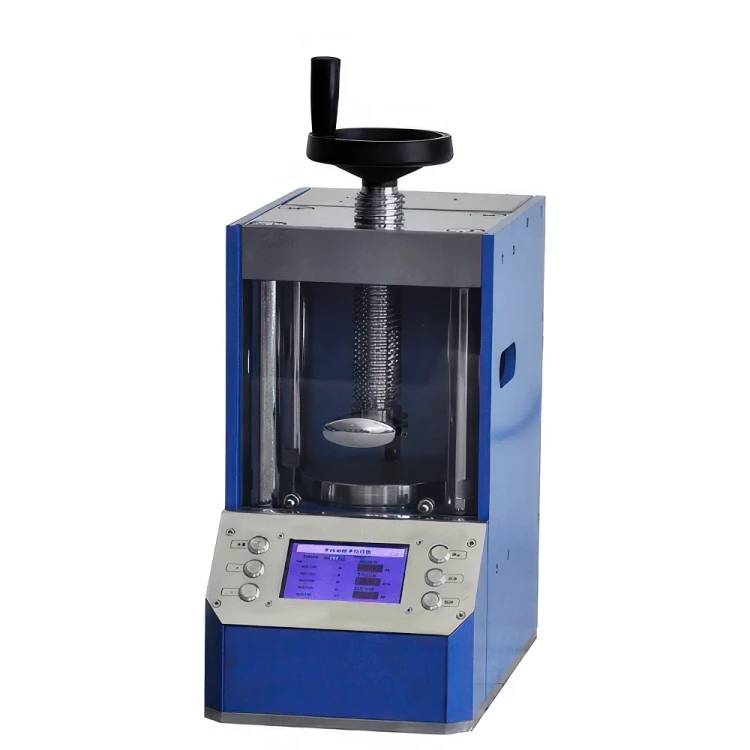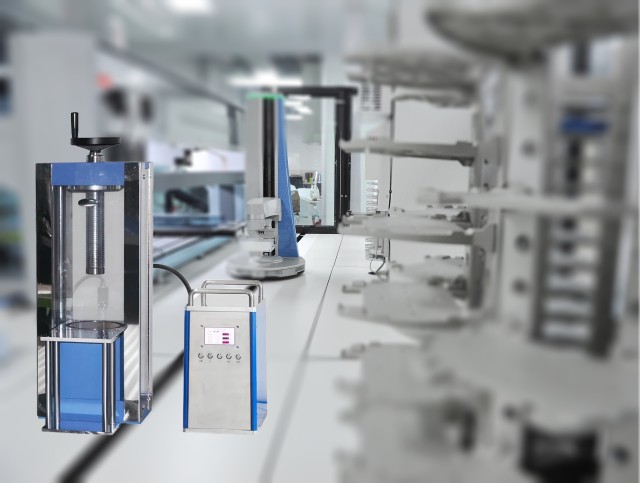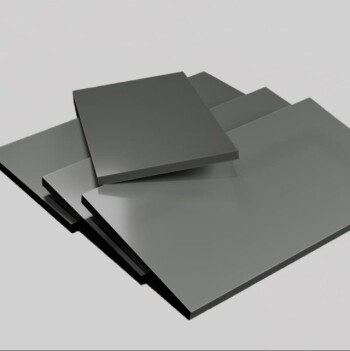Introduction to Lab Presses in R&D
Lab presses are an essential tool in research and development for a wide range of industries, including pharmaceuticals, materials science, and electronics. These machines are used to apply high pressure and temperature to materials to create new compounds, study their properties, and determine their potential applications. Lab presses come in various types, including hydraulic, pneumatic, and electric. They also vary in size and capacity, from small benchtop models to large industrial-scale machines. The use of lab presses in R&D has become increasingly important in recent years, as researchers seek to develop new materials and optimize production processes.
Table of Contents
Benefits of Lab Presses in R&D
Lab presses have become an indispensable tool in research and development (R&D) across a wide range of industries, including pharmaceuticals, biotechnology, and materials science. The advantages of using lab presses in R&D are numerous and are discussed below.

Precise Pressure and Force Application
One of the most significant benefits of lab presses is their ability to apply precise pressure and force to materials, allowing researchers to study the behavior of these materials under different conditions. This is particularly important in materials science, where the properties of materials can be studied and optimized for specific applications. The ability to apply precise pressure and force also helps in the manufacturing of ceramics and composites by compressing, shaping, or forming materials into specific shapes and sizes.
Automation and Accuracy
Lab presses are becoming increasingly automated, allowing researchers to perform experiments with greater accuracy and reproducibility. The design and manufacture of these presses typically include programmable controls, allowing users to press products more accurately, consistently, and according to specific requirements. The automation of lab presses can help to accelerate the development of new products and materials, reduce costs, and improve overall efficiency.
Durability and Longevity
The durability of lab presses ensures long life in the lab, providing long-lasting and consistent results. The laboratory presses are designed and manufactured to withstand high demands, which is why they are an integral part of industrial inquiries. It is also necessary to consider how much space is provided in the lab, how much energy and strength is required to pump the press and whether or not the press will have to move.
Wide Range of Applications
Apart from R&D work and testing, laboratory platen presses can also be used for short production runs and lean manufacturing applications. They are also often used for educational and research purposes in universities. Pharmaceutical, laminating, rubber and plastic molding industries are among those that benefit from laboratory presses. They are also common in R&D work, testing, short runs, limited production, cell manufacturing, and lean manufacturing.

Creation of Compressed Pellets
A laboratory press is used to create compressed pellets out of powdered material for use in applications as diverse as pharmaceutical development, spectroscopy, and bomb calorimetry. Powders are placed into a die (or mold) of the laboratory press and are pressed into shape by hydraulic action. One important consideration is the shape of the desired pellets, which can vary between different products. Some laboratory presses can accommodate a wide range of different-sized or customized dies.
In conclusion, lab presses offer numerous benefits in R&D, including precise pressure and force application, automation and accuracy, durability and longevity, wide range of applications, and creation of compressed pellets. With these advantages, lab presses are likely to remain a critical tool in R&D for many years to come.
Applications of Lab Presses in R&D
Lab presses are becoming increasingly important in research and development due to their diverse range of applications. They are used to compress and shape various materials in laboratories, from pharmaceutical companies to manufacturing plants.
Manufacturing of Electronic Components
One of the significant applications of lab presses in R&D is in the manufacturing of electronic components. Lab presses are used to produce high-quality and precise parts for diverse electronic devices. With the growing demand for electronic devices, lab presses play a vital role in producing reliable and efficient electronic components.
Pharmaceutical Industry
Lab presses are also widely used in the pharmaceutical industry to create tablets with specific release rates. The tablets' quality is critical in the pharmaceutical industry, and lab presses help to produce tablets that meet the desired quality standards.
Materials Science
In materials science, lab presses are used to investigate the properties of materials under extreme pressure. This process helps researchers to understand their properties better and develop new materials that can withstand high pressure.
Energy Storage
Lab presses are also used in the development of energy storage devices, including batteries and fuel cells. The presses help to compress and shape materials used in energy storage to improve their efficiency and performance.
Nanotechnology
In nanotechnology, lab presses are used to create nanomaterials with specific properties. The materials produced can be used in various applications, including electronics, medicine, and energy storage.
In conclusion, lab presses are crucial tools in research and development, with diverse applications across various industries. As technology continues to advance, new advancements in lab press technology will further enhance their usefulness in research, opening up endless possibilities for their applications in fields such as medicine, engineering, and nanotechnology.
Advancements in Lab Press Technology
Lab presses have come a long way since their inception. With the advent of new technologies, lab presses have become more advanced, efficient, and precise. In this section, we will discuss some of the significant advancements that have been made in lab press technology.
Computer Control Systems
One of the most essential advancements in lab press technology is the integration of computer control systems. The computer control systems allow researchers to monitor and adjust the pressure, temperature, and time of the pressing process accurately. With computer control systems, researchers can obtain more precise results and achieve higher levels of consistency.
Hydraulic and Pneumatic Systems
The development of hydraulic and pneumatic systems has increased the overall force and pressure capabilities of lab presses. Researchers can now work with a wide range of materials and achieve higher levels of precision. Hydraulic and pneumatic systems have also made lab presses more efficient, reducing the time required for testing.
Miniaturization of Lab Presses
Miniaturization of lab presses has been particularly useful in the field of microfabrication. Miniature lab presses can produce microstructures with high accuracy and resolution, making them ideal for research in microelectronics, nanotechnology, and biomedical engineering.
Innovative Materials
The use of innovative materials such as carbon fiber and ceramic composites has made lab presses more durable, lightweight, and resistant to wear and tear. The innovative materials have also increased the overall lifespan of lab presses and reduced the need for frequent repairs.
In conclusion, the advancements in lab press technology have made them more efficient, precise, and versatile. The integration of computer control systems, hydraulic and pneumatic systems, miniaturization, and innovative materials has increased the overall force and pressure capabilities of lab presses, enabling researchers to work with a wide range of materials and achieve high levels of precision.

Importance of Choosing the Right Lab Press
Choosing the right lab press is a critical factor in ensuring accurate and reliable results in various industries. In this section, we will discuss the importance of choosing the right lab press and the factors that need to be considered while selecting one.
Impact on Research Results
The lab press plays a crucial role in the research and development process, and selecting the right lab press is critical as it can impact the quality and accuracy of research results. A lab press that is not appropriate for the intended application, with the wrong force capacity, pressure control, and temperature management, can lead to inaccurate and inconsistent results. Therefore, it is important to select a lab press that meets the specific needs of the research.
Factors to Consider
Several factors need to be considered while selecting a lab press. The first factor is the intended application of the lab press. Different lab presses are designed for various purposes, such as material testing, sample preparation, and powder compaction. Selecting a lab press that is appropriate for the intended application is the first step in ensuring accurate and consistent results.
Another important factor is the force capacity of the lab press. The force capacity of the lab press should match the force required for the intended application. A force capacity that is too low or too high can lead to inaccurate results.
Pressure control and temperature management are also essential factors to consider while selecting a lab press. Pressure control is important because it ensures that the pressure applied is consistent throughout the process. Temperature management is necessary because some applications require precise temperature control.
Ease of use, maintenance, and affordability are other factors that need to be considered while selecting a lab press. A lab press that is easy to use and maintain can save time and reduce the risk of errors. Affordability is also a factor to consider as lab presses can be expensive, and selecting the right lab press within budget is important.
In conclusion, choosing the right lab press is crucial in ensuring accurate and reliable results in various industries. The lab press should be selected based on the intended application, force capacity, pressure control, and temperature management. Additionally, factors such as ease of use, maintenance, and affordability should also be considered while selecting a lab press.
Conclusion: The Future of Lab Presses in R&D
As technology continues to advance, lab presses are becoming more sophisticated and efficient in performing their functions. In the future, we can expect to see even more advancements in lab press technology, resulting in greater precision, accuracy, and automation. Lab presses will become increasingly integrated with other laboratory equipment, allowing for seamless data collection and analysis. Furthermore, the use of lab presses in R&D will expand beyond traditional industries such as pharmaceuticals and materials science, with applications in areas such as food science and electronics. Overall, the future of lab presses in R&D looks promising, with endless possibilities for innovation and discovery.
Related Products
- Automatic Laboratory Hydraulic Pellet Press Machine for Lab Use
- Manual Lab Heat Press
- Laboratory Hydraulic Press Lab Pellet Press Machine for Glove Box
- Automatic Heated Hydraulic Press Machine with Heated Plates for Laboratory Hot Press 25T 30T 50T
- Electric Lab Cold Isostatic Press CIP Machine for Cold Isostatic Pressing
Related Articles
- A Comprehensive Guide on Pressing XRF Pellets Using a KinTek Automatic Hydraulic Press
- Applications and Importance of Hydraulic Press in Laboratories
- Fully automatic tablet press operating steps and replacement accessories
- Manual Hydraulic Pellet Press: An Efficient Tool for Spectral Analyses Preparation
- An In-Depth Guide on Laboratory Presses and KBr Pellets Production























